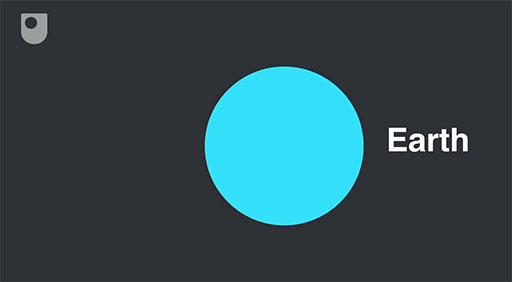2.1 The Moon’s orbit
As you have just heard, a moon is a natural satellite that orbits another, always larger, Solar System body (sometimes called its ‘primary’), which in turn orbits the Sun.
In the early 1600s, the Italian astronomer Galileo Galilei made improvements to his telescope design, which enabled him to observe the skies in greater detail than ever before. Using this telescope, in 1610, he documented the presence of four bodies that were orbiting the giant gas planet Jupiter.
This was a major breakthrough in human understanding of the Solar System and Earth’s place in it; until these observations of four moons of Jupiter, the prevailing view was that the Earth was at the centre of the Universe and all motion was centred on it. However, if Jupiter had moons of its own in orbit around it, then clearly this was not the case.
Most orbits in the Solar System are slightly elliptical, meaning that at different times during a moon’s orbit, it moves closer to, or further away from, its planet. The point at which an orbiting body is closest to its planet is called ‘perigee’ for anything orbiting the Earth, whereas the term ‘periapsis’ is the general term for orbits around any object. The furthest point of an orbit is called the ‘apogee’ in the case of an orbit round the Earth, whereas the general term is ‘apoapsis’.
In the video the elliptical shape of the orbit has been exaggerated for clarity.

